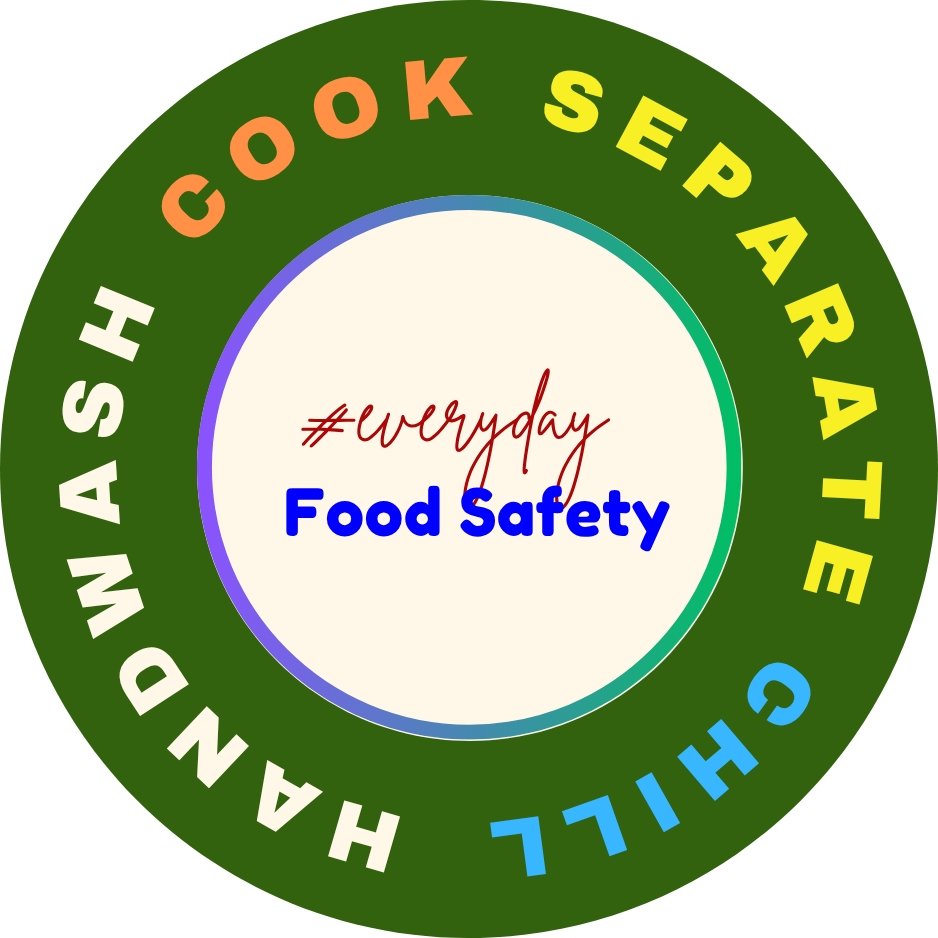Everyday Food Safety
Food Defense – Your Shield for Protecting Food Business and Global Food Supply
What is food defense?
Food defense is a systematic program designed to prevent intentional food adulteration. Unlike food safety, which is managed through HACCP Plans and addresses accidental hazards, food defense, on the other hand, focuses on protecting against deliberate acts intended to harm public health, disrupt operations, or damage a brand.
Main threat categories:
- Sabotage occurs when someone intentionally tampers with a product or piece of equipment to cause damage or disruption.
- Terrorism, meanwhile, involves ideologically motivated efforts to cause widespread harm or panic through the food supply chain.
- Food fraud (EMA) refers to economically motivated adulteration (such as substitution, dilution, or mislabeling) that can also pose safety risks.
Why does this matter?
By implementing food defense, you protect consumers and, importantly, uphold brand trust. Additionally, you meet regulatory requirements (e.g., FDA/FSMA, Codex/EU), which in turn lowers the risk and expense of recalls and investigations.
During audits, ensure that you present a well-written plan, a current vulnerability assessment, mitigation actions with owners and due dates, training records, and drill and recall test results.
What are the types of attackers?
1) Disgruntled Employees (Insiders)
Insiders are familiar with your layout, schedules, and controls. As a result, they can take advantage of lapses, especially in open-product areas.
High-level practical example: a recently disciplined operator repeatedly accesses an open-product step during an unsupervised pause, bypassing a simple line-clear rule.
Primary controls include:
- People: foster a respectful culture, ensure lawful pre-hire screening, enforce strong offboarding procedures (including the prompt return of badges and keys), and provide anonymous reporting options.
- Physical: use least-privilege badges, enforce a two-person rule in open-product zones, lock chemical and tool storage, and, indeed, maintain operational CCTV.
- Process: conduct a weekly review of access logs, use incident playbooks, and track Corrective Action and Preventive Action (CAPA).
What to review:
- Are badge exception reports examined every week?
- Are chemical/tool sign-out logs reconciled daily?
- Is a buddy system enforced during changeovers and breaks?
KPIs:
- Percent of access anomalies closed in 5 business days – meaning, out of all unusual or suspicious access incidents, what % are investigated and resolved within five working days?
- Percent of open-product shifts with buddy coverage – the percentage of work shifts where, whenever the food is exposed (not sealed or opened), two people are present together, making it less likely for someone to tamper with the food.
2) Criminals (Financially Motivated)
Criminals target vulnerable targets for profit—counterfeit goods, diluted ingredients, stolen products, and falsified COAs.
Practical example: a cheap shipment of a high-value spice arrives with a suspicious Certificate of Analysis (COA) and an inconsistent sensory profile.
Primary controls:
- Suppliers: risk-based approval, performance scoring, re-approval schedule.
- Materials: Conduct seal checks during hand-offs and perform risk-based authenticity testing for high-risk commodities.
- Logistics: vetted third-party logistics providers, GPS or route verification for sensitive loads, and sealed custody logs.
What to review:
- High-risk ingredients covered by a Vulnerability Assessment and Critical Control Points (VACCP)/Economically Motivated Adulteration (EMA) assessment?
- Does receiving verify the COA, seal, and count against the Purchase Order (PO) each time?
- Mock traceability tests completed within target hours?
KPIs:
- Seal discrepancy rate – how often do we find broken or missing seals on deliveries?
- Traceability “test-to-proof” time – how long do we track a product from where it started to where it should end up, and prove it went through the proper steps.
3) Terrorists/Extremists (Ideological)
The frequency is low, but the impact can be severe. Attackers focus on leverage points that create a significant downstream effect.
High-level practical example: Attempts to obtain floor plans and batch sizes for bulk mixing to understand the potential impact.
Primary controls:
- Vulnerability Assessment (VA) using CARVER+Shock to prioritize and strengthen high-impact steps.
- Dual-person access and supervision in high-risk zones.
- Crisis communications and intentional adulteration drills.
- Liaison points for regulators and law enforcement.
What to review:
- Do high-impact steps include additional controls (dual-access, CCTV, seals)?
- Are drill CAPAs being closed on time?
KPIs:
- Conduct regular practice drills (such as emergency or intentional adulteration drills) to ensure the food defense plan operates effectively.
- CAPA closure time – how long does it take to fix a problem after it’s found? Starting from when a corrective or preventive action is assigned until it is completed.
- Percentage of high-impact steps with dual-control implemented – portion of the most critical or high-risk steps in your process where two people are required to be present to add security and reduce the likelihood of tampering.
4) Competitors (Reputation/IP abuse)
Rare but possible—counterfeiting, brand misuse, or IP theft can lead to serious safety and trust issues.
Practical example: Counterfeit packaging discovered in market channels, posing a threat to traceability and consumer safety.
Primary controls:
- Anti-counterfeit packaging feature: controlled artwork.
- NDAs, “no-photo” zones, escorted tours.
- Verified vendor lists and managed sample programs.
What to review:
- Packaging specs include overt/covert security features?
- Are Visitor NDAs, escort logs, and restricted routes enforced?
KPIs:
- Number of brand-misuse takedowns
- % of tours with NDA and escort documented – this indicates the % of tours where visitors signed a Non-Disclosure Agreement (NDA) and were accompanied by an escort, with both actions duly documented.
5) Opportunists (Low-Skill Exploiters)
People take advantage of easy mistakes—propped doors, unattended ingredients, unlocked rooms.
Practical example: a driver follows too closely through an unsecured door into a restricted staging area.
Primary controls:
- Door discipline, alarms, clear signage, and visitor escort policy.
- 5S/visual controls so anomalies stand out.
- Conduct brief “micro-audits” at the start of each shift to verify doors, seals, and open-container rules.
What to review:
- Doors latched, not propped? Are visitors always escorted?
- Open-product/additive policies posted and followed during breaks?
KPIs:
- Door-alarm events per month.
- % of visitor entries with full escort trail.
Threat Sources
1) Physical Threats
Deliberate foreign objects (e.g., metal fragments, glass, needles) or interference with guards/sieves/magnets.
Example: A broken viewing window near an open mixer increases the risk of glass fragments being released.
Controls: guarded equipment; validated sieves/magnets/metal detectors; tamper-evident covers and hatches; tool custody logs.
Audit prompt: Are detectors and magnets challenged at defined intervals, with records kept?
2) Chemical Threats
Intentional use of toxic chemicals or allergens, or misuse of cleaning agents and additives.
Example: unlabeled decanted chemicals stored near ingredients.
Controls: locked chemical rooms, color-coded containers, a “no decanting” policy, validated allergen changeovers, and line clearance.
Audit prompt: Are chemical stores locked, labeled, inventoried, and reconciled?
3) Biological threats
Deliberate use of pathogens or toxins, hazardous at post-kill/RTE steps.
Example: recurring environmental hits in a high-care room after layout changes.
Controls: Zoning with pressure differentials, strict sanitation and pre-operation protocols, environmental monitoring, targeted deep cleans, and post-kill segregation.
Audit prompt: Does EMP trending drive corrective actions and re-testing?
4) Cyber Threats
Attacks on IT/OT that alter recipes, set-points, traceability, or access.
Example: Unauthorized remote access changes a temperature set point.
Controls: Multi-factor authentication (MFA), least privilege, network segmentation between IT and OT, change control logs, offline or immutable backups, and tested recovery.
Audit prompt: Is Multi-Factor Authentication (MFA) enforced for admin and remote access across IT and OT?
5) Supply Chain Weaknesses
Suppliers, logistics providers, and third-party handlers must undergo documented approval and risk assessments to ensure compliance with relevant regulations. A robust Food Traceability System strengthens food defense by enabling rapid recalls and verifying the integrity of the supply chain.
Example: An imported shipment of spices arrives with a broken seal and mismatched lot documents.
Controls: risk-based supplier approval and audits; seal custody at each hand-off; GPS/route verification for sensitive loads; targeted authenticity testing.
Audit prompt: Do receiving logs reconcile COAs, seals, counts, and temperatures each time?
Food Defense Vulnerability Assessment (VA plan) — Step-by-step Guide
Step 1: Map facility & process flow
What to do: maintain a version-controlled layout showing zones (raw/high-care/RTE), open-product steps, utilities, access points, bulk tanks, and rework loops.
For example: receiving → storage → prep → mixing → thermal step → cooling → packaging → warehouse → dispatch.
Evidence: dated map, legend, and trained staff. Mapping should also consider facility layout and zoning in line with Good Manufacturing Practices (GMP).
Step 2: Identify vulnerable steps
What to do: flag steps involving open product, large aggregation (bulk or batching), limited supervision, or utility interfaces. Include breaks and changeovers.
For example, open mixing and rework staging receive “high” candidate flags.
Evidence: a shortlist or small selection of the best or most suitable choices.
Step 3: Score risks with CARVER+Shock
Actions: Have the cross-functional team assign scores of C, A, R, V, E, R, and +Shock (1–10) to each shortlisted step, and record the rationale.
Example: A total of 59 indicates a critical or high level; reworking staging totals of 51 indicates a high level.
Evidence: Signed score sheets and meeting notes.
Who should do the scoring?
Food Defense Team – Ideally, a cross-functional team made up of:
- QA / Food Safety Manager (leads the process)
- Production and Process Manager / Supervisors
- Security Manager
- Maintenance / Engineering Rep (for facility vulnerabilities)
- HR Rep (for insider threats like disgruntled employees)
A team approach guarantees the scoring is fair, unbiased, and not solely based on one person’s opinion.
Step 4: Prioritize critical points
What to do: sort by total; set thresholds (e.g., ≥60 critical; 45–59 medium). Create a “top-10” register with owners and due dates.
Example: Assign a production manager to oversee mixing mitigations and security, including access upgrades.
Evidence: Risk register dashboard.
Step 5: Apply Mitigation Strategies
What to do: Implement layered controls across physical, procedural, technical, and cultural areas to reduce Accessibility, Vulnerability, Recognizability, and enhance Recoverability.
Evidence: SOPs, PMs, access lists, training logs, and effectiveness checks.
Step 6: Document & Update
What to do: Conduct annual reviews and follow up after changes, such as layout, suppliers, or incidents, to ensure ongoing effectiveness. Perform recall/IA drills and close CAPAs with deadlines.
Example: A new spice supplier prompts re-scoring and an authenticity test plan.
Evidence: Version history, drill reports, and management review minutes.
Food Defense Assessment Plan (How You Run the Program)
- Who monitors each step: assign specific owners — warehouse for receiving seals and COAs, production for supervising open products, QA for testing and verification, and security for CCTV and access control.
- Risks are confirmed through weekly CCTV spot checks (documented), monthly badge exception reviews, allergen swabs after cleaning, and seal audits at both the receiving and dispatch locations.
- Corrective actions: when a control fails (e.g., broken seal, missing log, offline camera), hold the affected product, investigate, implement CAPA, retrain if needed, and document closure dates.
- Audit frequency & review: Conduct internal audits every quarter using your checklist; hold an annual management review to reassess VA items, update training, and allocate funds for mitigations.
Mitigation & Prevention Strategies
- Restrict access: Zone badges are mandatory; visitors must be escorted at all times. No-photo areas are clearly marked.
- Install surveillance: CCTV in high-risk zones, schedule camera maintenance, and ensure alarmed emergency exits work properly.
- Train employees with quick, scenario-based refreshers; empower them to “see something, say something”; and protect reporters from retaliation.
- Vet suppliers: implement risk-based approvals, conduct audits and re-approvals; include contract clauses for transparency and unannounced audits.
- Use FIFO/FEFO to minimize idle periods that opportunists can exploit; verify proper rotation during audits.
- Crisis plans: conduct mock recalls and deliberate adulteration drills; keep updated contact trees for regulators and customers; have pre-approved public statements ready.
- Cleaning and Sanitation: Effective Cleaning and Sanitation also make intentional adulteration more difficult by eliminating residual risks.
Benefits of Food Defense
- Consumer trust: visible controls and audit results enhance confidence among customers and buyers.
- Compliance: programs align with FDA FSMA and Codex/EU standards; audits run smoothly.
- Financial protection: prevention is more cost-effective than a recall; insurance and customer agreements might require it.
- Market advantage: readiness frequently secures tenders and facilitates exports; documented VA with CARVER+Shock indicates maturity.
Conclusion
Food defense isn’t just about compliance—it’s a strategic investment that maintains consumer confidence, adheres to global standards, and protects your market reputation. Ultimately, strong food defense programs safeguard the health of your consumers, the resilience of your business, and the future of our global food supply.
Don’t leave your brand and food business reputation to chance. For a comprehensive approach, review our HACCP Plan Guide in conjunction with the Food Defense Guide and our Food Defense Audit Checklist, utilizing the CARVER+SHOCK Tool now, to identify and address vulnerabilities before they become public.
Now is the time to prioritize food defense as a visible, actionable effort—because the safety of what we eat matters to everyone, everywhere.




